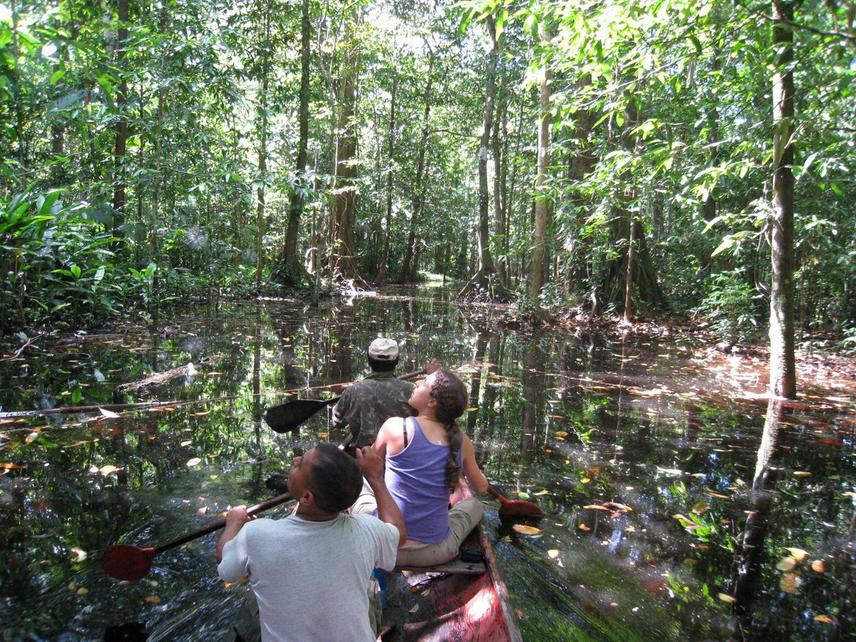Marina Londres
Other projects
25 Aug 2009
Researching Sustainability of Harvests Jointly with Local Stakeholders in Amazonian Flooded Forests: Linking Science with Action
7 Jun 2012
Complexity of Forest-Based Livelihood Strategies and Factors Influencing Local Resource Use across Regions and Scales: Implications for Policy
This project aims to contribute to the sustainable management of tropical forests by local populations through participatory research on ecology of a key timber and non-timber species and through a capacity building program.
Andiroba (Carapa guianensis Aubl., Meliaceae) is a highly important Amazonian species, with both timber and non-timber values. Nonetheless, we have limited ecological understanding of andiroba necessary to develop and implement sustainable management systems. I propose to examine two critical aspects of andiroba ecology in different forest types:
(1) population structure;
(2) fruit production.

Participatory data collection. © Marina Londres.
Research will build upon preliminary work in the study site in which a local forest-dwelling community identified andiroba as the most important species in their livelihood systems. To ensure research relevance and effectiveness, activities are being implemented in a fully participatory manner.
From 2005 to 2007, I worked for a Brazilian non-governmental organization, conducting participatory research on the ecology of key species that sustain livelihoods of local communities at the Amazon estuary region. The community São João do Jaburu identified andiroba as the most important species for their livelihoods. My proposal is to continue working with this community to better understand andiroba population dynamics and fruit production, and to maintain our local capacity-building program. Andiroba plays a critical economic and subsistence role in the livelihoods of hundreds of local communities occupying Amazonian floodplain forests.
Oil extracted from andiroba seeds has been used medicinally for centuries. Recently, andiroba oil has gained attention from pharmaceutical and cosmetics industries; at the same time there is intense pressure to log valuable andiroba timber. Despite its role as a key forest resource, little is known about andiroba ecology, particularly in the Amazonian flooded forests where it is most prevalent. This paucity of information extends to many non-timber forest products (NTFPs) within a community based context. This is surprising given that forest communities hold approximately 30% of the Amazon forest (and therefore play a crucial role in its conservation), and that commercial NTFPs harvest has been widely promoted as a strategy to reconcile conservation and local livelihood improvements.
Using andiroba as a model species and through innovative participatory research, this work will contribute to the scientific understanding of production variation of natural populations of commercially important tropical NTFPs.
Through a collaborative process, this work will generate key information leading to the goal of providing management recommendations, concerning sustainable harvest levels and supplying communities with information useful in weighing the relative advantages of andiroba fruit and timber production. The participatory approach and capacity building will facilitate local assessment of resulting recommendations, providing a broader local understanding of the research enterprise, and empowering local forest managers.